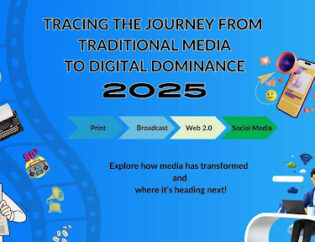
Introduction
The fast growth of artificial intelligence (AI) is causing an abrupt change in the field of public relations (PR) quickly. Press releases, which were previously used to be sent out by fax machines and manually curated email lists, are now becoming automated, highly optimized, communication and data-driven tools.
AI is changing not just how media releases are shared, but also redefining how effectively they work. The role of artificial intelligence in PR helps make communication more accurate and reach a wider audience, using content optimization and predictive analytics.
Let's look at how AI is changing the way press releases are shared and why businesses should embrace this change.
AI-Driven Content Optimization: Making the Best Message
The era of relying on guessing how to write headlines and organize content is over. Artificial intelligence (AI) tools can evaluate large amounts of data to find the best schemes that are most effective for different audiences.
How It Works:
- Sentiment Analysis: AI examines previous corporate bulletins and social media trends to suggest tone and language that resonate with your audience.
- Keyword Insights: Advanced tools like MarketMuse or Clearscope recommend the most impactful keywords to improve SEO rankings and enhance visibility.
- Dynamic Adjustments: AI adapts messaging to fit platform-specific requirements, ensuring that your media release is effective across digital channels.
Real-Life Example:
A global fashion brand used AI tools to refine its press statement headline for a new collection. The upgraded headline increased click-through rates by 30%, proving the value of data-driven content creation.
Automated Distribution Strategies: Efficiency at Scale
Previously, the process of distributing a media release included manually emailing journalists in the hopes of securing coverage. AI has automated and streamlined this process to guarantee that the appropriate message is delivered to the appropriate individuals at the right hour.
AI in Action:
-
- Smart Targeting: AI identifies journalists and influencers most likely to engage with your content based on their past coverage and interests.
- Set Up Optimization: Tools such as Meltwater or Prezly use foretelling analytics to figure out the best time to send press statements for maximum engagement.
- Personalized Outreach: Artificial intelligence (AI) has the ability to mold emails or proposals, thus boosting the chance of publication and making them more relevant to the topic.
Case Study:
A tech startup leveraged AI-based distribution to announce its Series B funding. Compared to traditional methods, targeting tech journalists who had previously written about similar startups has achieved a 70% higher response rate.
Predictive Analytics: Reaching the Right Audience
The ability of artificial intelligence to predict audience behavior is one of its most innovative contributions. AI is capable of forecasting trends and identifying the most effective distribution channels through the use of machine learning algorithms.
Benefits:
- Enhanced Targeting: Predictive models analyze information about demographics, browsing habits, and media consumption patterns to identify the most appropriate audience.
- Performance Metrics: AI monitors engagement metrics in real-time, allowing public relations teams to make data-driven adjustments for future events.
- Media Monitoring: Artificial intelligence (AI) tools such as TrendKite or Cision generate immediate notifications when your media release is referenced, guaranteeing that you can promptly respond.
Example in Practice:
A healthcare organization used predictive analytics to distribute media statements about a groundbreaking study. By focusing on academic journals and health-focused websites, they achieved record-breaking visibility within their target audience.
AI and Multimedia: Transforming Press Release Formats
Today’s audiences expect more than just text. AI enables the seamless integration of multimedia elements, such as videos, infographics, and interactive content, to make media releases more engaging.
Capabilities:
- Content Recommendations: AI tools suggest the best types of media to include based on audience preferences.
- Automated Video Creation: Platforms like Lumen5 use AI to generate video summaries of media releases, which can be shared on social media.
- Personalized Visuals: AI customizes visual elements to align with regional or cultural preferences, enhancing global reach.
Example:
A non-profit organization used AI-generated infographics in its media statement about a climate change initiative. The visuals garnered widespread attention on social media, leading to increased donations.
Why Businesses Should Embrace AI in PR
The integration of AI in media release distribution is no longer optional—it’s essential for staying competitive.
Key Advantages:
- Time Efficiency: Automation frees up PR teams to focus on strategy rather than manual tasks.
- Cost Savings: AI helps save resources needed for research, writing, and sharing information.
- Better Returns: With accurate targeting and real-time data, businesses can see clear results.
The Future of AI in Media Releases
As AI technology continues to grow, we can look forward to new ideas in public relations. This could include voice-activated press statements for smart devices and augmented reality (AR) experiences embedded within announcements, as the options are endless.
Artificial Intelligence ( AI ) is more than just a tool; its transformational force is changing the future of how we communicate. By using AI-driven solutions, businesses can reach more people, improve their messages, and stay ahead in a fast-changing media world.
What do you think about the role of AI in media statements? Are we ready for a fully automated PR world, or do you believe that human involvement is still important? Let’s talk about it!

